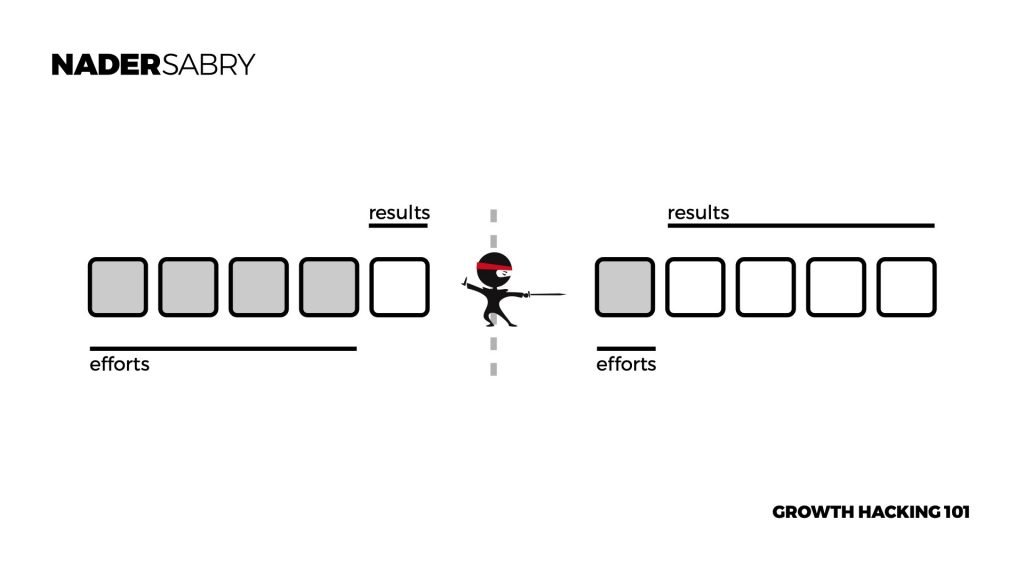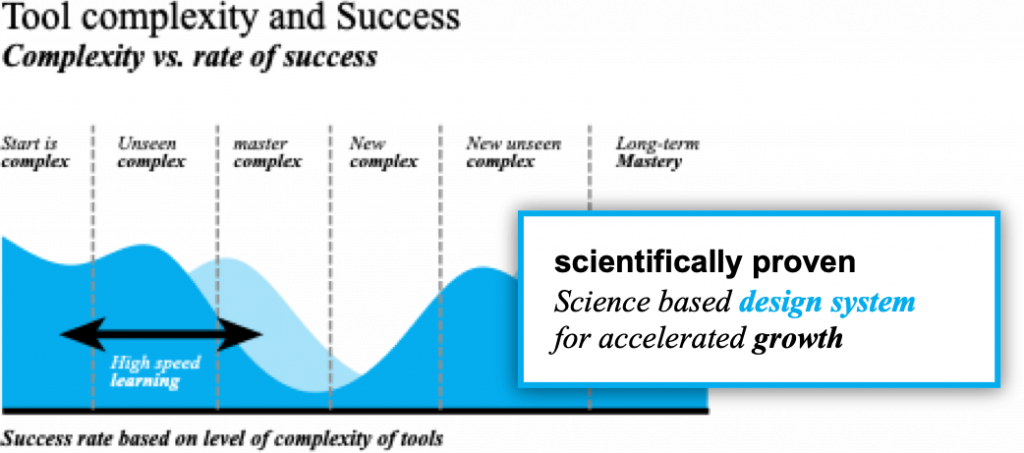Government Growth Hacking: Examples and Data Points
A New Era of Innovation” highlights the potential of growth hacking in the government sector. The author points out that government organizations can benefit from growth hacking techniques by improving their services and providing better experiences to citizens.
The article delves into several examples of government growth hacking worldwide, including New York City’s 311 services, Estonia’s e-Residency program, India’s Aadhaar program, and Singapore’s Smart Nation initiative.
These examples showcase how growth hacking can solve complex problems and drive innovation in the public sector. The article concludes by emphasizing the importance of collaboration and data-driven decision-making in government growth hacking.
Before we get started, some helpful background to growth hacking
- What is growth hacking?
- Why is growth hacking important?
- How does growth hacking work?
- When should growth hacking be used?
- How to develop the skills to hack growth?
What is growth hacking, and What do growth hackers do?
Growth hackers explore new growth opportunities systematically at any point of the customer journey, from awareness through the market to brand ambassadors by optimizing the product.
Regarding technology, it originated in 2010 when Sean Ellis coined it and is mostly used by growth hacks for startups because of its limited budgets and resources.
Since then, it has shown an incredible increase in popularization among large-scale and traditional businesses.
Companies like Shopify and Uber have their own head of growth and dedicated growth teams. The growth hacker is based on experiment-based and data-driven.

There is a wide range of definitions; in the Book Ready Set Growth, Hack growth hacking is defined strategically as achieving disproportional results.
This is best understood through an example of efforts v.s results. This is when less effort is exerted to get dispositional results.
Subscribe for updates
How does growth hacking work?
As defined in the Ready Set Growth Hack, growth hacking is a systematic process governed by a concept called the growth cycle. the growth cycle is a three-phase process, starting with a growth problem, moving into experimentation, and scaling.
Based on this process, once a growth problem is defined through a specific process, it would be up to the growth hacker to find solutions. Solutions are found vis structured and systematic experimentations.

Using growth analytics for data-driven growth decisions, growth hackers can quickly discover what works and doesn’t before investing a penny in more development. This is governed by a process called growth thinking, a design methodology used for growth hacking.

Break the rules – growth hacking.
The hidden weapons of growth hacking are simple and simple: Be a rule-breaker. The job requires you to think outside the box and unleash your creativity.
A growth hack involves having the right growth-hacking mindset.
This job requires creativity and ad-hoc experiment with hypotheses and high potential. Be creative growth Hacks won’t come with any rules.
Rule-breaking is at the core of growth thinking and how the growth hacking process works.
- if a rule is working, find a better way to break I
- If a rule isn’t working, break it with a better one
- If a rule is about to fail, let it and then break it
- If a rule is about to have success, break that too
The growth hacking or growth mindset is a very different way of working than other professions. Their goal is the north star metric which is basically a growth goal and only a growth goal.
Growth hacking is a process of rapid experimentation across marketing channels and product development to identify the most effective, efficient ways to grow a business. While traditionally associated with startups and tech companies, growth hacking has found its way into the public sector, where governments at all levels apply these principles to achieve their goals.
Here are some examples of government growth hacking initiatives and the data points that show their impact:
- New York City’s 311 service
New York City’s 311 service is a prime example of growth hacking in government. The 311 service is a central hub for citizens to report non-emergency issues, such as noise complaints or potholes, and get information on city services. The city has dramatically increased its usage by constantly iterating on the service and adding new features. In 2020 alone, there were over 31 million interactions with the 311 service, up from just 2.5 million in 2004.
NYC Open Data. (2021). 311 Service Requests from 2010 to Present. https://data.cityofnewyork.us/
- Estonia’s e-Residency program
Estonia’s e-Residency program is a government initiative that allows non-residents to establish an online presence in Estonia and conduct business in the European Union. By targeting digital nomads and entrepreneurs who want to do business in Europe without the hassle of setting up a physical presence, Estonia has attracted thousands of new businesses to its economy. Since the program’s launch in 2014, over 80,000 people from 170 countries have applied for e-Residency, registering over 10,000 new companies in Estonia.
e-Residency. (2021). e-Residency by the numbers. https://e-resident.gov.ee/
- India’s Aadhaar program
India’s Aadhaar program is a government initiative that aims to provide every citizen with a unique identification number linked to biometric data. The program has significantly impacted India’s economy by making it easier for citizens to access government services and reducing fraud in distributing welfare benefits. According to a report by the World Bank, the Aadhaar program has saved the government over $11 billion in welfare fraud and reduced the time it takes to open a bank account from several weeks to just a few minutes.
World Bank. (2019). Identification for Development (ID4D) Annual Report 2018-2019. https://documents.worldbank.org/
- Singapore’s Smart Nation initiative
Singapore’s Smart Nation initiative is a government effort to use technology to improve the lives of its citizens. By implementing smart solutions such as autonomous vehicles and smart homes, Singapore has improved efficiency and reduced costs in areas such as transportation and healthcare. For example, implementing a smart healthcare system has allowed patients to receive more personalized care and reduced the length of hospital stays by 10%.
Smart Nation Singapore. (2021). Smart Nation in Action. https://www.smartnation.gov.sg
These examples show that growth hacking principles can successfully apply to government initiatives. Governments can achieve their goals more efficiently and effectively by constantly experimenting and iterating on their programs. As more governments adopt these principles, we can expect to see even more innovative solutions to public problems in the future.
Subscribe for updates
How governments are using growth hacking
Government growth hacking involves using innovative and data-driven strategies to achieve goals and solve problems in the public sector. It includes tactics such as A/B testing, leveraging social media, user-centered design, and creating partnerships with private sector companies.

These approaches have been successfully applied to various government initiatives, ranging from increasing citizen engagement to reducing bureaucracy and improving the delivery of public services.
Governments can improve their efficiency, responsiveness, and effectiveness by adopting growth hacking techniques, leading to better outcomes for citizens and society.
- Digital Services: Many governments have launched digital platforms to make it easier for citizens to access government services. For example, the Indian government launched the UMANG (Unified Mobile Application for New-age Governance) app, which provides access to over 600 government services. Similarly, the Estonian government has implemented an e-government system that allows citizens to access a wide range of services online, from paying taxes to voting.
- Social Media: Governments increasingly use social media to engage citizens and promote their initiatives. For example, the UK government used social media to promote its “Stay Home, Save Lives” campaign during the COVID-19 pandemic. The campaign reached over 2 million people and helped to raise awareness about the importance of social distancing.
- Data Analytics: Governments use data analytics to make data-driven decisions and improve their services. For example, the New York City Police Department (NYPD) implemented a predictive policing program that uses data analytics to identify areas with high crime rates and deploy officers to those areas. This program helped to reduce crime rates by 5.8% in its first year of implementation.
- Hackathons: Governments are hosting hackathons to encourage innovation and find new solutions to societal challenges. For example, the US Department of Health and Human Services (HHS) held a hackathon to find new ways to prevent and treat opioid addiction. The hackathon resulted in several new solutions, including an app that helps patients track their medication use and a data visualization tool that helps doctors identify at-risk patients.
- Partnerships: Governments are partnering with private companies and non-profit organizations to achieve their goals. For example, the UK government partnered with the private sector to launch the Cyber Essentials scheme, which helps small businesses protect themselves against cyber threats. The scheme has been successful, with over 30,000 businesses certified since its launch in 2014.
Some data points that illustrate the success of government growth hacking initiatives include:
- The UMANG app in India has been downloaded over 25 million times and has processed over 190 million transactions since its launch in 2017.
- The Estonian e-government system has reduced the time to start a new business from several weeks to just a few hours.
- The NYPD’s predictive policing program has been credited with reducing crime rates by over 25% in some areas of the city.
- The HHS hackathon resulted in over 50 new solutions to prevent and treat opioid addiction.
- The Cyber Essentials scheme has helped to reduce the number of cyber attacks on small businesses in the UK by 80%.
Further, Dubai is a city that has been implementing growth hacking strategies in its government operations. Government growth hacking app. Here are a few examples:
- DubaiNow App: The Dubai government launched the DubaiNow app to provide citizens with a single platform to access government services, such as paying bills and renewing visas. The app has been designed to provide a seamless user experience, making it easy for people to complete transactions quickly and efficiently. By making government services more accessible, the Dubai government has increased citizen engagement with government services.
- Dubai Blockchain Strategy: The Dubai government has launched the Dubai Blockchain Strategy, which aims to create a blockchain-powered government by 2020. The strategy focuses on three main pillars: government efficiency, industry creation, and international leadership. By leveraging blockchain technology, the government aims to reduce transaction costs and improve transparency and security.
- Dubai Future Accelerators: The Dubai Future Accelerators program connects government entities with technology startups to solve the government’s key challenges. The program provides startups with access to government resources and funding to develop innovative solutions. By collaborating with startups, the government has implemented new technologies and services quickly and efficiently.
- Dubai 10X Initiative: The Dubai 10X Initiative aims to make Dubai government services 10 years ahead of other cities. The initiative involves implementing new technologies, such as artificial intelligence and blockchain, to improve government services and operations. The initiative encourages government entities to think innovatively and develop solutions that can be implemented quickly.
The Dubai government has proactively adopted growth hacking strategies to improve government services and operations. The government has implemented innovative solutions quickly and efficiently by leveraging technology and collaborating with startups.
What is the concept of a government growth hack?
The concept of government growth hack refers to using innovative and unconventional strategies to achieve rapid growth or improvement in government policies, services, and programs. The term “growth hack” originated in the startup world, where it refers to creative, low-cost methods used to grow a business quickly.
In the context of government, growth hacking might involve using technology to streamline government services, engaging citizens through social media, or partnering with private companies to implement new solutions. Government growth hacking aims to find new and better ways to serve citizens, improve outcomes, and achieve policy objectives.
Some examples of government growth hacks include:
- Using social media to gather feedback from citizens and engage them in the policy-making process
- Implementing a one-stop shop for government services online, making it easier for citizens to access information and complete transactions.
- Partnering with private companies to pilot innovative solutions in areas like transportation, housing, or healthcare
The concept of government growth hack is still relatively new, but it is gaining popularity as governments worldwide look for ways to modernize and improve their services in the digital age.
Government growth hacking fact sheet.
What is government growth hacking?
Government growth hacking uses unconventional marketing tactics and data-driven experimentation to improve the efficiency and effectiveness of government programs and services.
Examples of government growth hacking:
- Improving tax collection rates by simplifying tax forms and increasing communication with taxpayers
- Reducing emergency response times by using predictive analytics to identify high-risk areas and pre-positioning resources
- Increasing voter turnout by using social media and text message reminders to encourage people to vote
- Improving public transit ridership by using targeted advertising and personalized recommendations
- Streamlining the process for applying for government benefits by using user testing and feedback to simplify and improve the application process
Benefits of government growth hacking:
- Improved efficiency and effectiveness of government programs and services
- Cost savings through increased automation and reduced waste
- Improved citizen satisfaction and trust in government
- Increased revenue through improved tax collection rates
- Improved public safety through faster emergency response times
Challenges of government growth hacking:
- Resistance to change and experimentation within the government bureaucracy
- Limited budgets and resources for experimentation
- Data privacy concerns and limitations on data sharing between government agencies
- Political pressures and conflicts of interest that can hinder experimentation and innovation
Government growth hacking has the potential to significantly improve the efficiency and effectiveness of government programs and services, but it also faces significant challenges. By embracing experimentation and data-driven decision-making, government agencies can improve citizen satisfaction and trust while reducing costs and increasing revenue.
Subscribe for updates
Checklist for growth hacking validation for government decision-makers when growth hack?
When government decision-makers want to growth hack, there are several important factors to consider:
- Set clear goals: Defining your goals with your growth hacking initiatives is essential. Do you want to increase citizen engagement, improve service delivery, or reduce costs? Be specific about what you want to achieve.
- Understand your target audience: To create effective growth hacking strategies, you must understand your audience. Who are they? What are their needs and interests? What motivates them to engage with government services and programs?
- Embrace a data-driven approach: Growth hacking is all about experimentation and testing. Collect data on your initiatives, measure their impact, and use the insights to refine your strategies.
- Collaborate across departments: Growth hacking requires cross-functional collaboration. Bring together stakeholders from different departments to share ideas and expertise.
- Be open to new technologies and approaches: Growth hacking often involves using new technologies and unconventional approaches. Be willing to experiment with new ideas and technologies to achieve your goals.
- Stay agile: Growth hacking requires a flexible and agile mindset. Be willing to pivot your strategies based on data and feedback.
- Be transparent and accountable: Growth hacking initiatives must be transparent and accountable to citizens. Communicate your initiatives and their impact to stakeholders, and be willing to course-correct if needed.
This is a validation checklist for growth hacking when taking on government growth hacking. By considering these factors, government decision-makers can create effective growth hacking strategies that achieve their goals, improve citizen engagement, and deliver better services and programs.
What is the difference between government growth hacking and private sector growth hacking
Government growth hacking and private sector growth hacking share similarities, such as the use of data-driven approaches, experimentation, and agility in decision-making. However, there are also some notable differences between the two:
- Motivations: While private sector growth hacking is mainly driven by the goal of increasing profits and market share, government growth hacking is more focused on achieving social outcomes and improving public services.
- Constraints: Unlike private companies, governments have to operate within legal and regulatory frameworks, which can limit their ability to experiment and innovate. Additionally, government agencies often have limited budgets and resources, making investing in new technologies or hiring top talent harder.
- Metrics: While private sector growth hacking often focuses on metrics such as customer acquisition and retention, revenue growth, and ROI, government growth hacking tends to prioritize metrics related to public service delivery, such as customer satisfaction, response times, and service quality.
- Stakeholders: Government growth hacking often involves a broader range of stakeholders than private sector growth hacking, including elected officials, citizens, advocacy groups, and other government agencies. This can make it more complex to design and execute growth hacking strategies aligned with different stakeholders’ needs and expectations.
Overall, while government and private sector growth hacking share some similarities, important differences must be considered when designing and executing growth hacking strategies in the public sector.
How should governments be looking at ROI when growth hacking
Regarding growth hacking in government, ROI (Return on Investment) can be measured differently compared to the private sector. Here are some factors that governments should consider when evaluating the ROI of their growth hacking efforts:
- Cost savings: Governments can measure the ROI of their growth hacking efforts by calculating the cost savings achieved through process optimization and automation. For example, if a government agency could automate a process that previously required manual labor, it could calculate the cost savings achieved by eliminating the need for human labor.
- Increased efficiency: Governments can measure the ROI of their growth hacking efforts by evaluating how much more efficient they have become due to implementing growth hacking strategies. This can include metrics such as faster processing times, fewer errors, and improved customer satisfaction.
- Improved revenue generation: While revenue generation may not be the primary goal for government growth hacking efforts, it can still be a valuable metric to track. Governments can measure the ROI of their growth hacking efforts by evaluating whether they have been able to generate additional revenue through increased efficiency, better customer engagement, or other means.
- Social impact: Besides financial metrics, governments can measure the ROI of their growth hacking efforts by evaluating their social impact. This can include metrics such as increased access to services, improved quality of life, and greater transparency and accountability.
Overall, it is important for governments to take a holistic approach to measure ROI when growth hacking. While financial metrics are important, they should not be the only factor considered. By taking into account the broader impact of growth hacking efforts, governments can better evaluate the true ROI of their strategies.
What are future trends for government growth hacking
The future of government growth hacking will likely involve the continued use of technology and data to improve services and processes and focus on engaging with citizens in new and innovative ways. Here are a few potential future trends:
- Increased use of artificial intelligence (AI) and machine learning (ML): Governments may use AI and ML to analyze data, automate processes, and provide more personalized services to citizens.
- Emphasis on citizen engagement: Governments may use social media and other digital tools to engage with citizens, solicit feedback, and involve them in decision-making processes.
- Continued focus on data-driven decision-making: Governments will likely continue to use data to drive decisions and optimize services. This may involve using big data, predictive analytics, and other data-driven tools.
- Expansion of digital services: Governments may continue to expand their digital services offerings, making it easier for citizens to access services and interact with the government online.
- Collaboration with the private sector: Governments may partner with private companies to leverage their technology, marketing, and user experience design expertise and resources.
Overall, the future of government growth hacking will likely involve a continued focus on innovation and experimentation as governments strive to provide better services and engage with citizens in new and meaningful ways.
Government growth hacking in conclusion
In conclusion, government growth hacking is a powerful tool that can help governments improve their services, reach more citizens, and drive economic growth. By focusing on user needs, experimenting with new approaches, and leveraging technology, governments can create innovative solutions that benefit both citizens and the government itself. As governments continue to face new challenges and opportunities in the digital age, growth hacking will likely become an increasingly important strategy for driving progress and improving outcomes.





